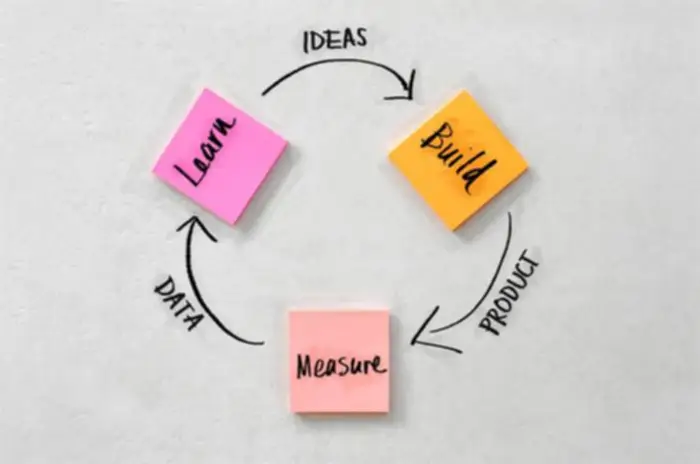Grid computing is extremely scaled distributed computing that emphasizes performance and coordination between a number of networks. Each grid community performs individual functions and communicates the outcomes to other grids. In such instances, an effort is made to fragment a task and execute the fragments independently in a parallel method throughout totally different distributed nodes while leveraging the benefits of both computing fashions. In Kokkos, the execution house refers back to the specific computing environment or hardware platform the place parallel operations and computations are executed. Kokkos abstracts the execution house, enabling code to be written in a descriptive method while adapting to numerous hardware platforms. Kokkos Mirroring method for information administration — Mirrors are views of equivalent arrays residing in possible different reminiscence spaces, which is once we distributed computing definition need information in both CPU and GPU architecture.
See Additional Guides On Key Software Improvement Topics
See how IBM Netezza Performance Server, a cloud-native enterprise information warehouse, helps operationalize deep analytics, enterprise intelligence and AI/maching-learning (ML) workloads by making knowledge unified, accessible and scalable, anyplace. Distributed computing is used when computers are positioned at different geographical places. Stack Exchange network consists of 183 Q&A communities including Stack Overflow, the biggest, most trusted online neighborhood for builders to learn, share their knowledge, and build their careers. Computers are both linked by way of a local network if they’re geographically shut to at least one one other, or by way of a large area community (WAN) if they’re geographically distant. Understanding these variations is key to attaining the absolute best results during computations. Accelerate innovation with a modern data platform that unifies hybrid and multicloud ecosystems.
Software Frameworks In Distributed Computing
Distributed computing excels in scalability, fault tolerance, and data sharing throughout a network of nodes. It is suitable for eventualities where information is distributed and processing energy must be scaled. On the opposite hand, parallel computing offers high-performance computing inside a single machine, leveraging multiple processors or cores. It is good for duties that can be divided into unbiased elements and require intensive computation. Both approaches have their strengths and weaknesses, and the choice between them depends on the specific necessities of the problem at hand.
Apache Spark: A Leap Forward In Knowledge Processing

You can change your settings at any time, together with withdrawing your consent, through the use of the toggles on the Cookie Policy, or by clicking on the handle consent button on the backside of the display screen. HiTechNectar’s analysis, and thorough research keeps enterprise technology consultants competent with the latest IT tendencies, points and occasions. Basically, we thrive to generate Interest by publishing content material on behalf of our assets. By completing and submitting this kind, you understand and comply with HiTechNectar processing your acquired contact data as described in our privacy policy.
- To reduce communication overhead, methods similar to gradient compression and asynchronous updates may be employed.
- Connect and share information within a single location that’s structured and simple to go looking.
- SIMT (Single Instruction, Multiple Threads), which is usually utilized in GPUs, relaxes this restriction.
- Database accessing and processing algorithms will happen on one other distant machine.
- This operate generates a mirror view in a specified execution house (e.g., GPU) with the identical knowledge type and dimensions as the primary view.
In this sort of system, users can access and use shared resources through an online browser or different client software. Distributed computing refers to a system where processing and data storage is distributed across multiple devices or techniques, somewhat than being dealt with by a single central gadget. In a distributed system, each gadget or system has its own processing capabilities and may also store and handle its own knowledge. These devices or techniques work together to perform duties and share assets, with no single gadget serving because the central hub.

In bit-level parallelism, the major focus is primarily on the size of the processor’s registers. By rising the register measurement, extra bits may be handled simultaneously, thus rising computational pace. The shift from 32-bit to 64-bit computing in the early 2000s is a major example of bit-level parallelism.
In distributed computing a single task is divided among totally different computers. In parallel computing a quantity of processors performs a quantity of tasks assigned to them concurrently. In shared memory architectures, utility programming interfaces like OpenMP (Open Multi-Processing) allow communication between threads that share memory and information. On the other hand, MPI (Message Passing Interface) can be used for communication between processes operating on the identical or different nodes in distributed memory architectures. Shared memory structure is used in common, everyday applications of parallel computing, corresponding to laptops or smartphones. In a shared memory architecture, parallel computers depend on multiple processors to contact the identical shared reminiscence useful resource.
In parallel computing, the processors talk with one another utilizing a bus. In the event of a disruption such as hardware failure, knowledge availability will nonetheless be maintained because of the other nodes in the system. Using distributed computing, organizations can create methods that span a number of geographic places. These often require collaboration between users in numerous places, using any variety of domains from Only Domains.

Expanding a distributed computing system is so easy as including a further node to the existing community. These highly configurable techniques feature scale-out structure, designed to scale horizontally so as to deal with rising workloads or heftier datasets. These fashions are structured in three tiers, with each answerable for specific functions. Typically, these are assorted as a presentation tier (that acts as a person interface), an software tier (that processes data) and a data tier (that stores data).
This is because the computer systems are related over the community and communicate by passing messages. Distributed computing is different than parallel computing although the principle is similar. We have witnessed the know-how business evolve a fantastic deal through the years.
In this mannequin, there is no central server; as a substitute, each node can request providers from and provide services to different nodes. This decentralization makes P2P architectures highly scalable and resilient, as there is no single level of failure. Moreover, in plenty of distributed computing methods, redundancy is built into the architecture. This signifies that if one node fails, its tasks can be reassigned to a different node, guaranteeing that there is no lack of service. This excessive availability makes distributed computing techniques extraordinarily resilient and reliable.
SIMT (Single Instruction, Multiple Threads), which is usually used in GPUs, relaxes this restriction. In SIMT, threads may be activated or deactivated so that instruction and information are processed in energetic threads; nonetheless, the local information stays unchanged on inactive threads. GPUs are designed to provide excessive computational throughput using their massively parallel structure. Their computational potential could be measured in billions of floating point operations per second (GFLOPS).
Moreover, distributed computing methods can optimize useful resource utilization. Instead of leaving a strong computer idle whereas a less highly effective one struggles with a task, the system can distribute the workload in accordance with the capabilities of every node. This ensures that each one resources are used optimally, additional enhancing the efficiency of the system. Real-time systems present a broader setting by which platform-based growth takes place. The time period real-time systems refers to computers embedded into vehicles, aircraft, manufacturing meeting strains, and different units to control processes in actual time.
When a function or computation, referred as a kernel, is executed on the GPU, it is often broken down into thread blocks. These thread blocks include multiple threads; each SM can manage many threads throughout its cores. If there are extra thread blocks than SMs, multiple thread blocks could be assigned to a single SM. Learn more about AI (artificial intelligence) infrastructure, also referred to as an AI stack, a time period that refers back to the hardware and software program needed to create and deploy AI-powered purposes and options.
These parts are allocated to totally different processors which execute them simultaneously. Another area the place parallel computing has made a profound impression is within the area of medical imaging. Techniques corresponding to Magnetic Resonance Imaging (MRI) and Computed Tomography (CT) scans generate a appreciable quantity of data that needs to be processed rapidly and precisely.
Transform Your Business With AI Software Development Solutions https://www.globalcloudteam.com/ — be successful, be the first!

Recent Comments